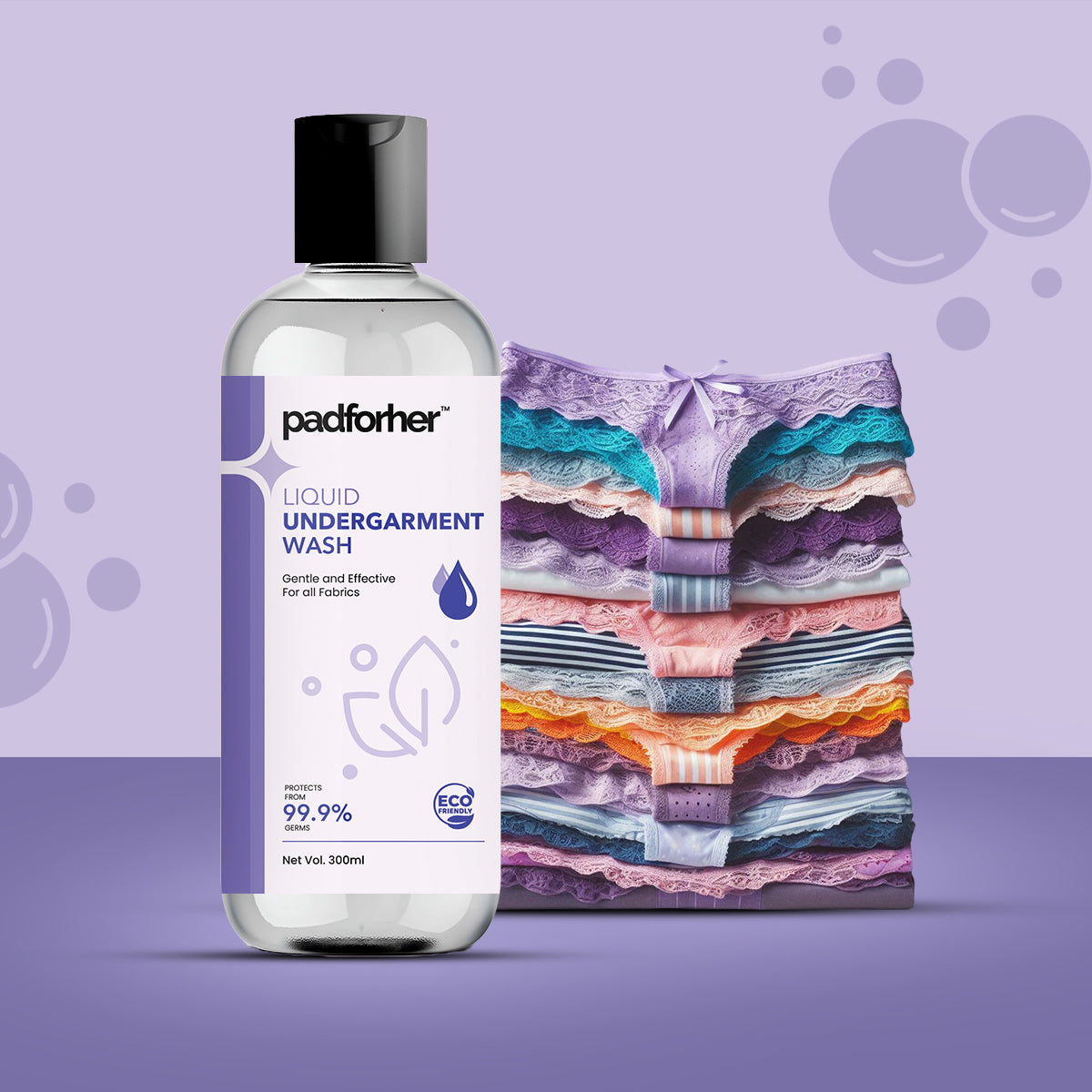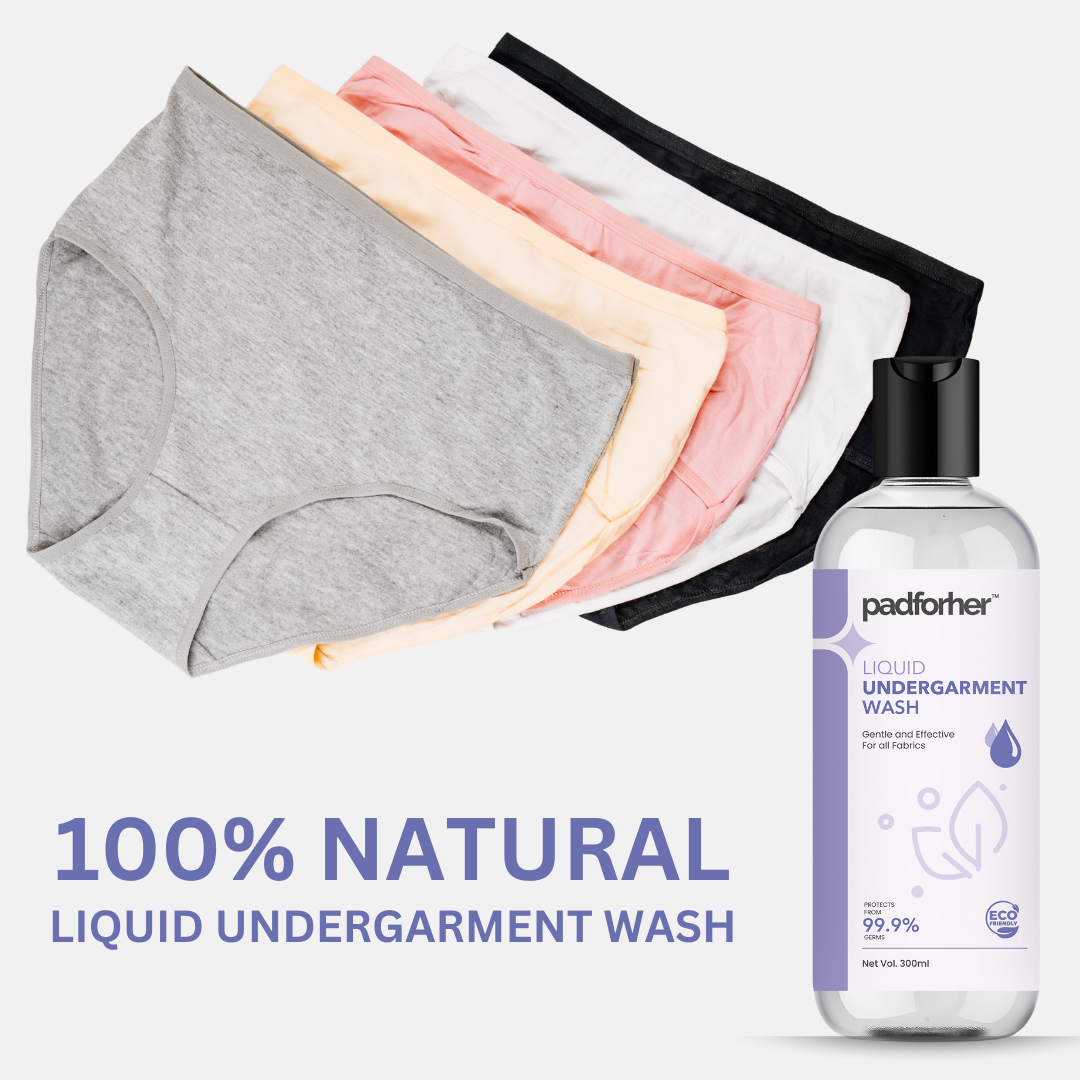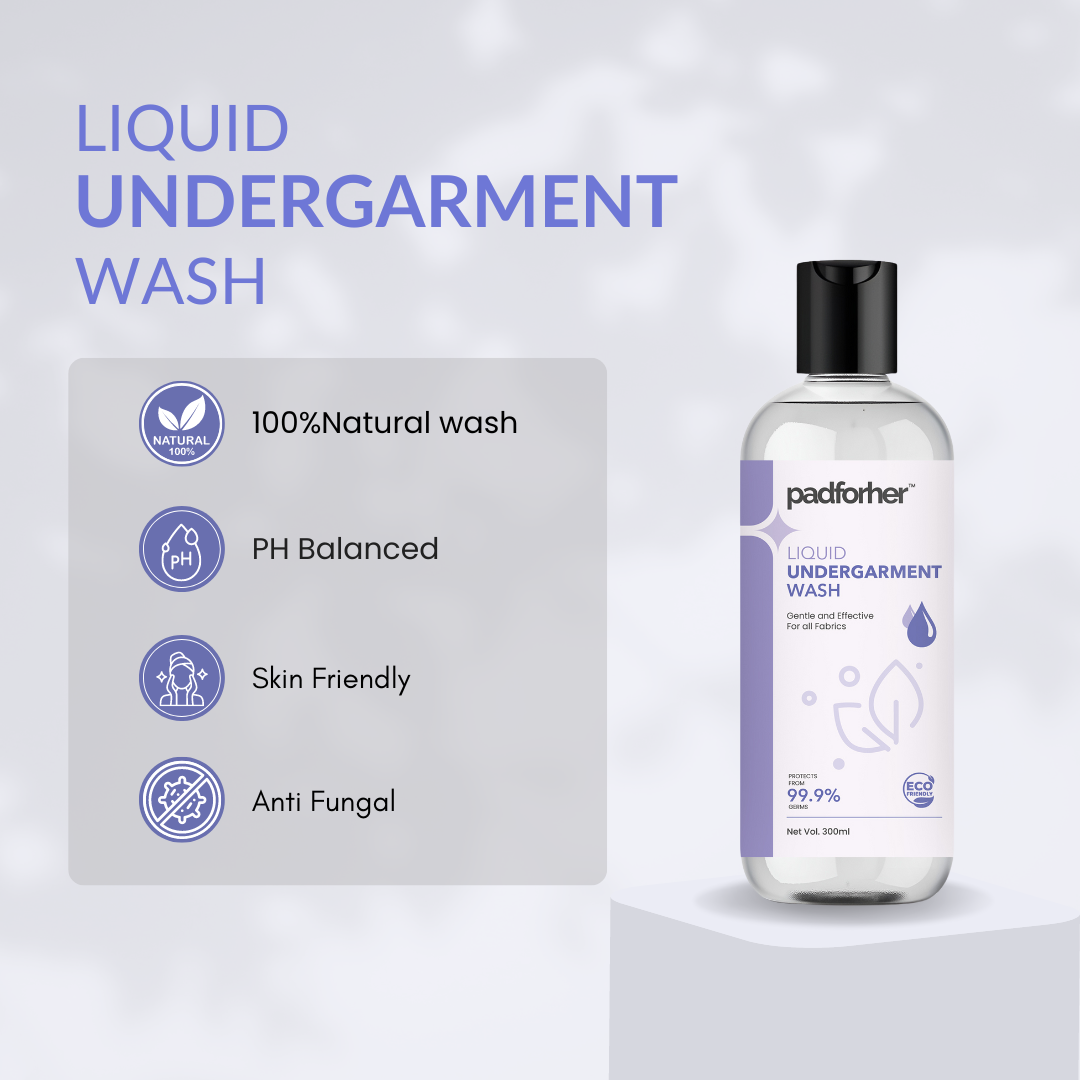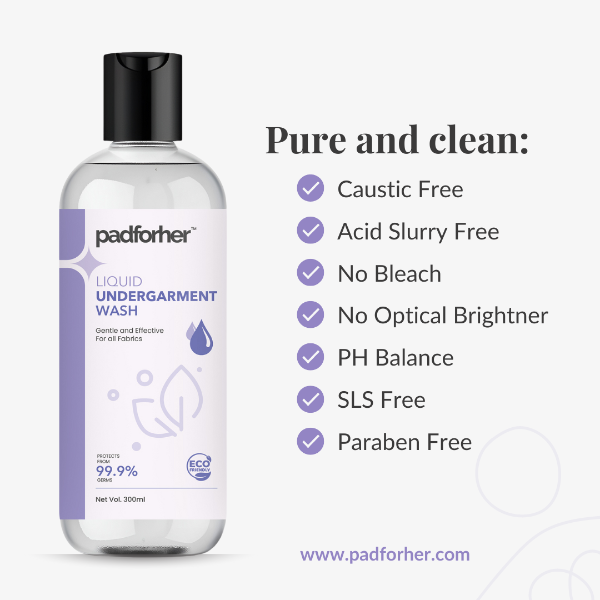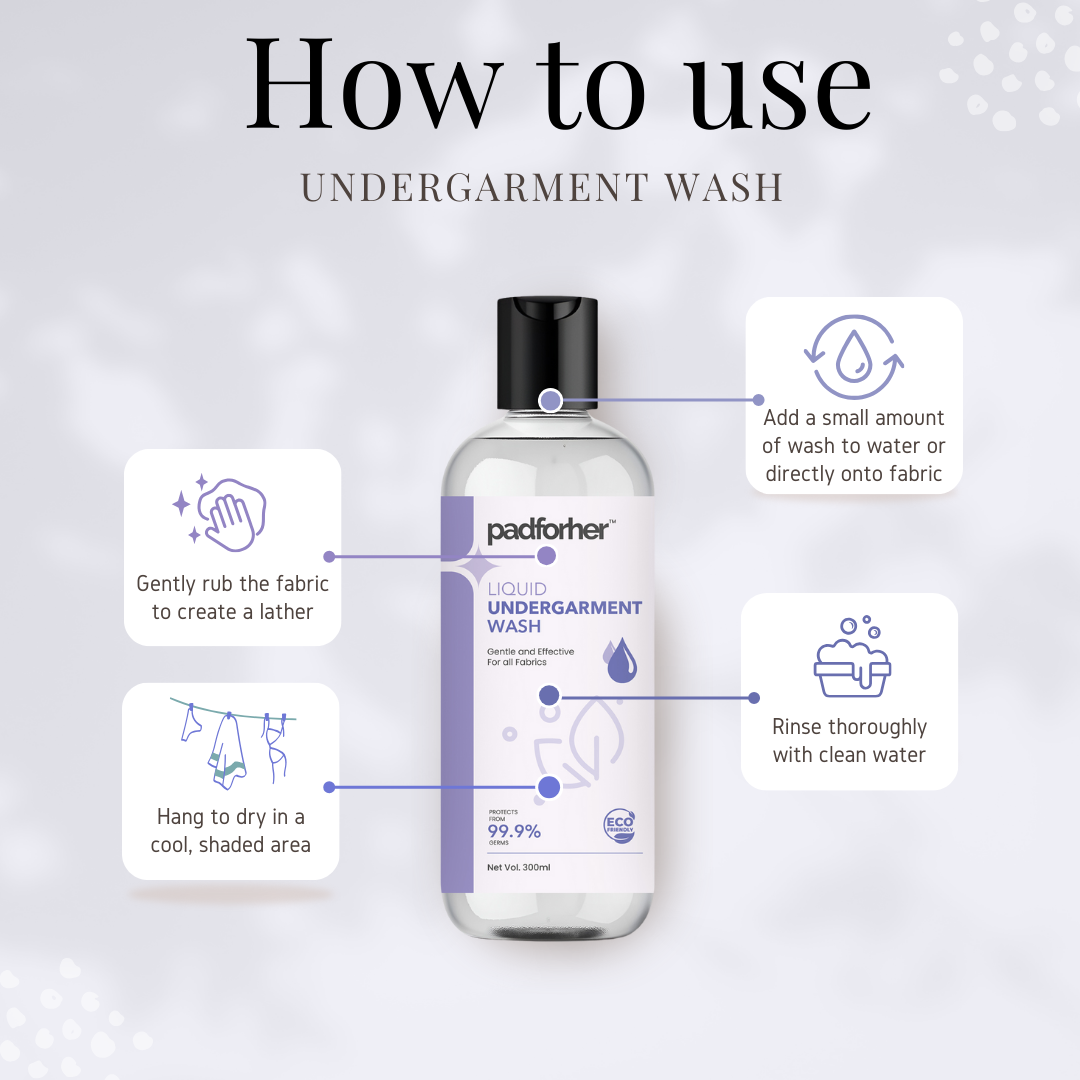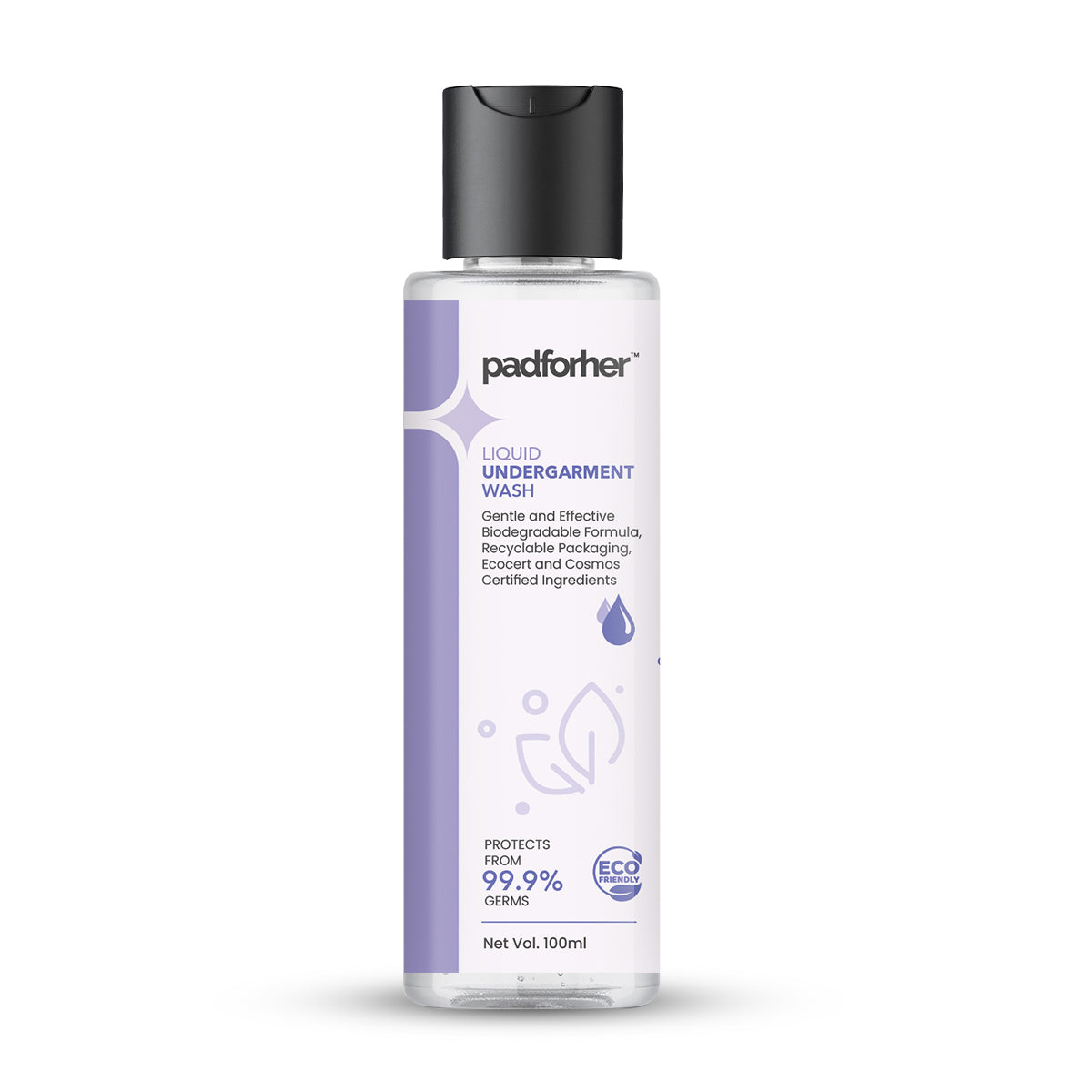Could Your Undies Be the Reason for Infections? Learn More Today!
Undergarments are an essential part of our daily wardrobe, but have you ever wondered if they could be contributing to issues like rashes, itches, and infections? The fabrics you choose and the detergents you use can play a significant role in your intimate health. Underwear may seem innocent, but it can harbour bacteria and fungi, irritate sensitive skin, and even disrupt your body’s natural pH balance.
In this blog, we’ll dive deep into the ways that your undies and care routines may lead to mild discomfort, and how this can escalate to infections. We’ll also explore the solutions to keep your vulva healthy and comfortable, all while using safe practices that encourage anti-bacterial growth and anti-fungal growth.
Detergent Residue: A Hidden Culprit
Most commercial detergents contain chemicals like sulphates and fragrances designed to deep clean fabrics. Unfortunately, these same chemicals can linger in the fabric fibres, even after washing. Residual detergent on underwear can cause direct irritation to your skin, leading to rashes and itches. This is especially problematic if you're prone to allergies or sensitive skin.
This fabric roughness, compounded by detergent residue, can further aggravate the situation. When your skin becomes irritated, it may cause scratching, which creates small breaks in the skin. These tiny abrasions become entry points for bacteria and fungi, promoting anti-bacterial growth and anti-fungal growth, increasing the risk of infections.
Rough Fabrics and Detergents: Causes of Rashes and Itches
Over time, frequent washing with harsh detergents can cause the softness of your underwear to diminish. This leads to roughness in the fabric, which can cause rashes and itches in the delicate skin around the vulva. The rough texture rubs against sensitive skin, creating mild to severe irritation.
Additionally, rough fabrics trap detergent residue, leading to even more irritation. Prolonged exposure to this roughness can aggravate skin, leading to redness, rashes, and discomfort. The key here is not only the rough fabric but also the buildup of detergents, which exacerbate the issue over time.
White Discharge and Spotting: Breeding Ground for Microbial Growth
Your vaginal area naturally produces white discharge, which is essential for maintaining vaginal health. However, when this discharge gets trapped in your underwear, it creates an environment where bacteria and fungi can thrive. This is especially true if you also experience spotting during your menstrual cycle, as blood can encourage even more microbial growth.
When white discharge and spotting mix with sweat, the warm and moist environment of your underwear becomes a perfect breeding ground for anti-bacterial growth and anti-fungal growth. If not cleaned properly, these microorganisms can lead to infections, rashes, and itches.
Spotting and Infection Risks: Why Proper Care Matters
Spotting, whether due to your menstrual cycle or other reasons, can leave traces of blood in your underwear. Combined with moisture from discharge or sweat, these conditions make it easier for bacteria and fungi to multiply. Over time, this can lead to infections like yeast infections or bacterial vaginosis.
Spotting can also cause itches and rashes when the blood mixes with sweat and stays on the fabric for extended periods. Without proper care—like timely washing or changing your underwear—you increase the chances of anti-fungal growth, leading to infections that can be painful and difficult to treat.
Disrupting pH Balance: How Fabrics and Detergents Impact Vulva Health
Your vulva’s natural pH is slightly acidic, ranging from 3.5 to 4.5, which helps keep harmful bacteria and fungi at bay. However, the wrong choice of underwear fabric and detergent can disrupt this delicate balance.
Synthetic fabrics like nylon or polyester do not allow proper air circulation, trapping heat and moisture. This change in environment increases the likelihood of anti-bacterial growth, shifting the pH to a more alkaline state, which encourages infections. Furthermore, using harsh detergents with a high pH can strip the natural oils from your skin, worsening the issue by making the vulva even more vulnerable to rashes and itches.
Breathable Fabrics: Choosing the Right Underwear for Anti-Bacterial Growth
The key to preventing anti-bacterial growth and anti-fungal growth is choosing breathable fabrics like cotton. Cotton allows air to circulate and absorbs moisture, helping to keep the area dry. Synthetic materials, on the other hand, trap moisture and heat, creating an ideal environment for bacteria and fungi to grow.
Opting for cotton underwear can prevent moisture buildup, reduce irritation, and allow your skin to breathe. If you prefer synthetic fabrics for their fit, make sure the crotch area is lined with cotton to maintain airflow and minimise the risk of itches and infections.
Gentle Detergents: Preventing Rashes and Irritation
Harsh detergents are one of the main causes of rashes and itches. These detergents contain strong chemicals that can irritate the skin and disrupt your vulva's natural pH balance. Switching to hypoallergenic or fragrance-free detergents, which are free from sulphates, dyes, and other harsh chemicals, can significantly reduce irritation.
It’s also essential to rinse your underwear thoroughly to remove any detergent residue that may linger after washing. Even small traces of detergent can irritate the skin, leading to rashes and worsening existing conditions like eczema or dermatitis.
Proper Laundry Hygiene: Killing Bacteria and Fungi in Your Underwear
Ensuring good laundry hygiene is crucial in preventing the growth of harmful bacteria and fungi. Always wash your underwear separately from other clothes, especially towels and heavily soiled items, which can transfer bacteria. Use hot water to kill any bacteria or fungi lurking in the fabric.
You can also add a natural disinfectant like white vinegar to your rinse cycle, as it has antibacterial and antifungal properties. This step will help promote anti-bacterial growth by removing harmful organisms from the fabric, leaving your underwear clean and safe to wear.
Frequent Changes: Reducing Microbial Growth and Discomfort
Changing your underwear frequently is a simple but effective way to prevent rashes and itches caused by moisture buildup. If you experience excessive discharge or sweat a lot, changing into fresh underwear can prevent bacterial and fungal growth, keeping your skin dry and comfortable.
Keeping an extra pair of clean underwear on hand can help on active days when sweating or discharge may be more intense. By frequently changing, you reduce the risk of anti-fungal growth and minimise the chances of developing infections.
Loose-Fitting Styles: Promoting Comfort and Preventing Infections
Tight-fitting underwear can restrict airflow, trap moisture, and increase the risk of rashes and itches. Choosing looser-fitting styles, like high-waisted briefs or boy shorts, allows better ventilation, reduces skin friction, and promotes comfort.
Loose underwear styles help prevent anti-bacterial growth and anti-fungal growth by maintaining a drier, cooler environment for your skin. This, in turn, reduces the chances of infections and keeps your vulva in a healthier state.
Vulvar Hygiene: Keeping Your Intimate Area Clean and Infection-Free
Maintaining proper hygiene is essential for preventing infections, rashes, and itches. Wash your vulva daily with warm water and a mild, unscented soap to avoid irritation. Avoid harsh cleansers that can disrupt the pH balance and lead to bacterial growth.
After washing, pat the area dry with a clean towel to prevent friction and irritation. Always wear clean, dry underwear afterward to keep your skin comfortable and free from infections. This simple hygiene routine will help maintain a balanced environment, reducing the risk of discomfort and infections.
Conclusion: Your Underwear Matters More Than You Think
Your underwear and care routine can significantly impact your intimate health. From causing rashes and itches to encouraging unwanted anti-bacterial growth and anti-fungal growth, these factors play a crucial role in keeping your vulva healthy. By choosing the right fabrics, using gentle detergents, and following proper hygiene practices, you can protect your intimate area and prevent infections.
Your underwear should bring comfort—not discomfort. Make the switch to better practices today and keep infections at bay!


